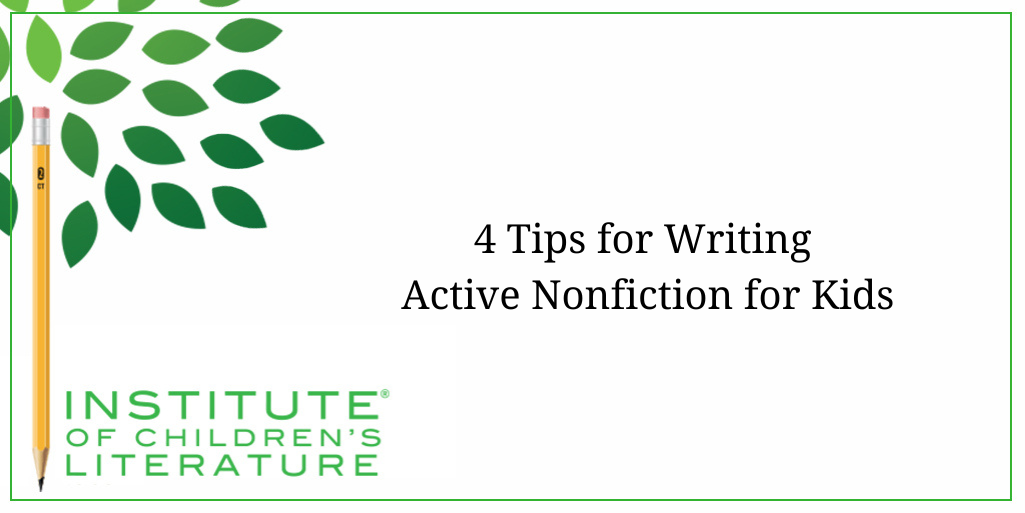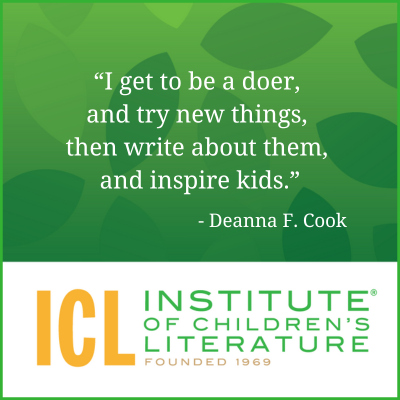
5 Ways Writers Can Prep for 2025 Goal Setting
Before we roll on to the new writing year, let’s harness our optimism for the blank slate before us and prepare for our 2025 Goal Setting just for writers.

Among the many different types of nonfiction, there is one that is both extremely popular with publishers and often overlooked by writers: active nonfiction. Active nonfiction, often called how-to, is written to get readers doing something and includes things like recipes, crafts, and physical activities.

Writing active nonfiction usually involves getting creative within a subject you love. If you love cooking, and especially cooking with kids, then you might want to consider a kids’ cookbook. This is especially true if you can bring something new to the kid’s nonfiction cookbook.
For example, I’ve seen cookbooks for kids based on making all kinds of different foods using muffin pans. I’ve also seen cookbooks for very young children that were more about assembling as they didn’t use stoves or other heat sources — for instance, such a book could include making robots with different fruits held together by toothpicks. This kind of creative “cooking” is art as much as culinary craft but can get young children excited about working with food.
Whatever activity you want to share, there are certain things to keep in mind as you write. You need to consider your reader, streamline your process, and test your results. Let’s look at how this works.
Anytime we write for young people, we benefit from deciding exactly who the ideal reader will be in terms of age and interests. This is absolutely essential in active nonfiction. Knowing exactly who you are writing for affects how you format the piece, the number of photos you’ll need, and how complex (and potentially safe) your creations will be. The reader needs to be old enough to have the skills to safely and successfully follow the steps in each project, but not so old that the end result seems babyish or too easy. You also need to think about what things interest kids at any given age and plan ways to make your content the most interesting.

In terms of choosing the perfect audience, a simple machines book would be popular with early elementary kids. They’re learning about simple machines in school, so the book might be bought by schools, but since the book creates toys the child can then play with, the book will be a good resource for home-school parents and parents with kids who like crafts. The skills involved would probably be too hard for preschoolers and too simple for middle school readers. Every active nonfiction book or article will have a readership for whom it works best, and you’ll need to figure out who that will be.
All active nonfiction is based on process. Readers follow steps that produce a specific end result. For older kids, these steps may be more open, allowing for more creativity in the process. For young children, the steps will be simple, clear, and exact to give them the best chance of success. But for every group, you will need to develop a chronological process for the reader to follow.

Be careful when creating your steps that you skip nothing. The best how-to articles don’t assume. This is especially important if you are writing a how-to in an area where you are an expert. Experts tend to do some things almost without thought.
For example, a cookbook by a skilled cook and for skilled cooks might have a step that tells the reader to break down a whole chicken. A cookbook for a beginning cook will explain exactly how you break down a chicken. And a cookbook for young teens will put “two pounds of chicken thighs” on the ingredient list because the reader isn’t going to be ready to learn to break down a chicken. Being able to break down exactly how you do what you do can be tough and depends on meeting the reader where he is in terms of skills and ability. When you manage writing for your perfect reader, you create the perfect how to.
Simplify where you can. Most activity nonfiction for children should be inexpensive to accomplish within a limited time frame, and that means you’re going to need to keep it simple. Simplicity can be difficult because it’s not hard to go too far and end up with a less than attractive or impressive (or tasty) result. You want the process to be accomplishable by the reader, but you also want it to be satisfying. So snip away unneeded complexity, but always ensure an end result the reader will be proud to have done.
Whenever I’ve written active nonfiction (and I’ve done a lot of it, mostly crafts), I ensure the steps I offer actually produce the end result when followed. Normally, I develop the project, then I write up the steps. Then I approach the piece again and try to recreate it strictly by following the steps. If that goes smoothly, I can be fairly confident I have a workable project, but my testing process isn’t done.
Before you or I submit any activity nonfiction, we need to try out our directions on someone else. Can someone come into the activity cold, follow the directions, and get the desired result without guessing or frustration? I can guess that answer is yes. I can believe the answer is yes. But I can only know the answer is yes if I’ve had someone do the project from my written instructions. The only real way to know the answer to this is to get someone to try it out.

When submitting active nonfiction, I always study the active nonfiction the publisher has already published. Often there are small changes in format between one publisher and another. For example, one publisher might prefer the steps be numbered while a different publisher only uses bulleted lists and still another publisher consistently uses in-progress photographs with the written text beside them. When I know what format a publisher has done in the past, I can be certain to format my offering in the same way.
When I’m describing my active nonfiction to a publisher, I use the “exactly the same, but totally different” rule. Publishers want what’s popular, but they also want to be unique. So I’ll look at ways my active nonfiction is like some of the books that have done well for this publisher (and other publishers like them), but I’ll also be able to tell why my project is unique and offers something new. It feels like a paradoxical requirement, but when you can come up with active nonfiction that fits what readers want but offers something new, you’ll be in a good place to make a sale.
Ultimately, writing active nonfiction is fun. It lets you play with materials and create something new. So if you love to cook or craft or make contraptions that move, this is the nonfiction style to try.
With over 100 books in publication, Jan Fields writes both chapter books for children and mystery novels for adults. She’s also known for a variety of experiences teaching writing, from one session SCBWI events to lengthier Highlights Foundation workshops to these blog posts for the Institute of Children’s Literature. As a former ICL instructor, Jan enjoys equipping writers for success in whatever way she can.

Before we roll on to the new writing year, let’s harness our optimism for the blank slate before us and prepare for our 2025 Goal Setting just for writers.

Writers can be thin-skinned when it comes to getting feedback on their work. Let’s look at 4 ways to positively deal with constructive criticism!

Rejection is part of the territory when it comes to being a writer. Today we offer reflection for writers to help redirect your efforts after a rejection.
1000 N. West Street #1200, Wilmington, DE 19801
© 2024 Direct Learning Systems, Inc. All rights reserved.
1000 N. West Street #1200, Wilmington, DE 19801
© 2024 Direct Learning Systems, Inc. All rights reserved.
1000 N. West Street #1200, Wilmington, DE 19801
© 2024 Direct Learning Systems, Inc. All rights reserved.
1000 N. West Street #1200, Wilmington, DE 19801
© 2025 Writewell, LLC. All rights reserved.
1000 N. West Street #1200, Wilmington, DE 19801
©2025 Writewell, LLC. All rights reserved. Privacy Policy.